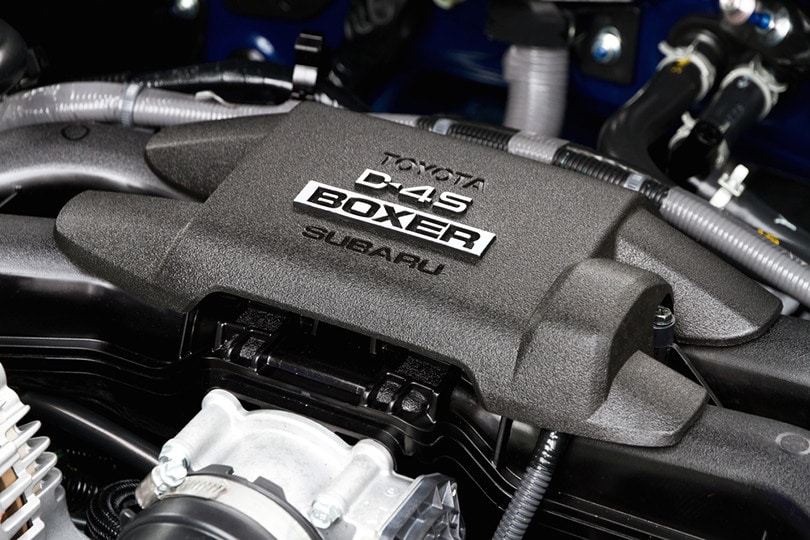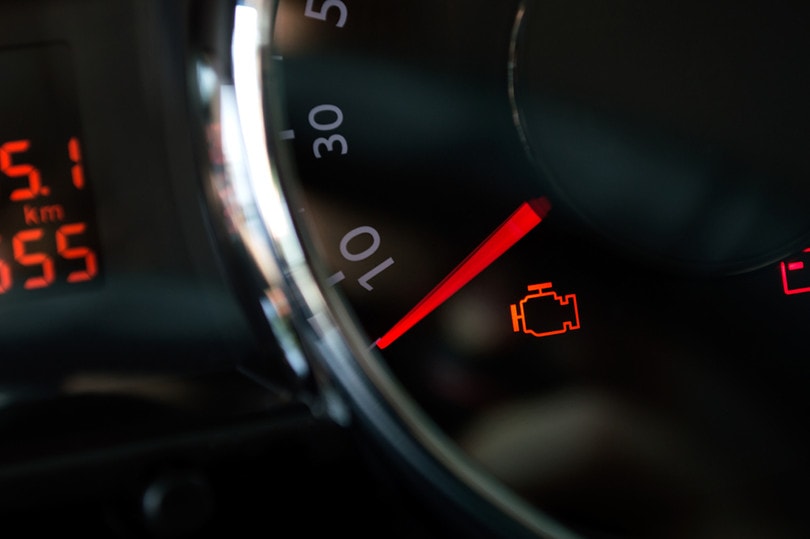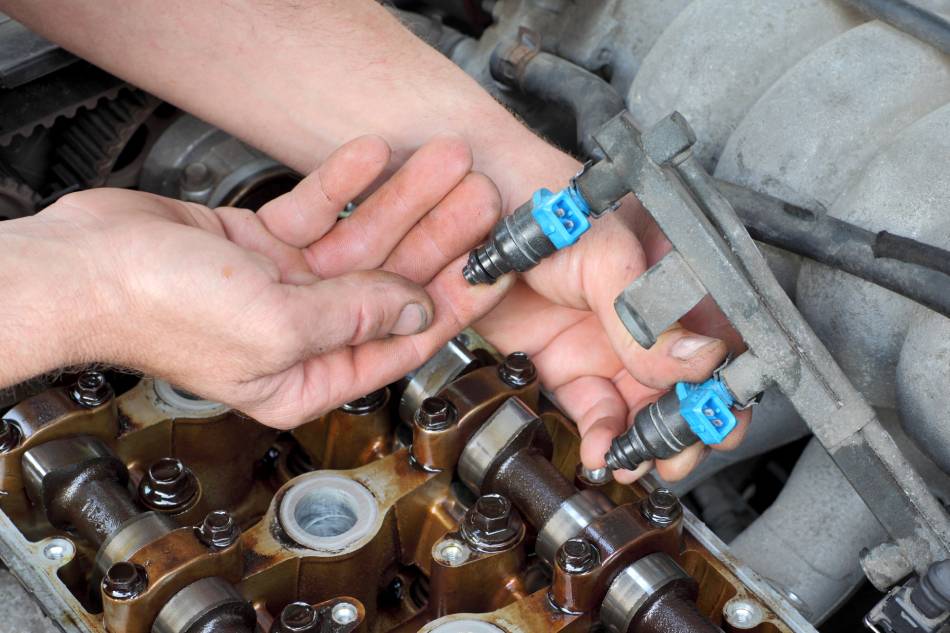Why Is My Engine Power Reduced? 6 Reasons
-
Jeff Weishaupt
- Last updated:

As a driver, you should understand what different dashboard lights mean. You never want to ignore a warning light, as it could indicate a severe problem with your vehicle.
The power reduction light is one such light. If this light comes on, your engine has a problem, and the vehicle is running at reduced power. There are many reasons for this light to come on, and it is essential to know what each one means.
Here’s an overview of why the reduced engine power light might come on. Plus, we explain what to do when that happens.
What Is the Reduced Engine Power Warning Light?
The reduced engine power warning light is a warning indicator that comes on when your vehicle’s engine computer detects an issue within the powertrain. When the light comes on, your vehicle’s engine is not producing as much power as it should. It can be caused by various issues, ranging from simple problems like a dirty air filter to more serious issues like a faulty oxygen sensor.
In some cases, the reduced engine power warning light may come on due to a vehicle’s throttle body problem. The throttle body is an engine component that controls how much air flows into the engine. If it becomes dirty or damaged, it can cause the engine to run less efficiently and may trigger the reduced engine power warning light. You’ll have to fix the problem for the light to go off.
If you see the reduced engine power warning light, it’s crucial to take action immediately. Depending on the severity of the problem, it may cause your vehicle to lose power and stall. In some cases, it may even prevent your car from starting.

The 6 Causes of Reduced Engine Power Warning Light
The reduced engine power warning light can come on due to many reasons. Here are some of them:
1. Circuit Issues
The most common cause for the warning light to come on is circuit issues. However, it can be caused by several things, such as loose or corroded battery terminals, bad grounds, a blown fuse, or even a problem in the PCM itself.
Circuit issues prevent the Throttle Actuator Control system from functioning correctly, which can cause the engine to run at reduced power. Or, in some cases, the engine may not start at all.
2. Defective Oxygen Sensor
The oxygen sensor in a vehicle is responsible for monitoring the air/fuel mixture. If the mixture is too rich or too lean, it will signal the PCM to make the necessary adjustments.
Over time, the oxygen sensor can become fouled by deposits and need to be replaced. When this happens, the engine will usually run richer than it should. An engine running rich means that the air-to-fuel ratio is too low. Thus, there is too much fuel and not enough air.
As a result, it can cause a decrease in fuel economy as well as an increase in emissions. It also produces an imbalanced air-fuel mixture that can cause pre-ignition and knocks. It can lead to engine damage over time.

3. Fault With the Throttle Body
The throttle body in a vehicle has the critical task of managing the amount of air that flows into the engine. The engine needs a certain amount of air to function properly, and the throttle body is responsible for ensuring that the right amount of air flows into the engine.
The throttle body comprises two main parts: the throttle plate and the throttle body itself. The throttle plate controls the air that flows into the engine. Meanwhile, the throttle body is the part of the throttle system that houses the throttle plate.
There’s also a butterfly valve that lets air into the engine. If the valve breaks, it can cause the engine to stall. Likewise, carbon buildup around the valve can also result in faulty operation.
When this happens, the engine does not get sufficient air. As a result, it misfires and sputters. It will also signal the dashboard, firing the reduced engine power warning light.
4. Malfunctioning Engine Control Unit
The Engine Control Unit is the brain of the engine management system. It manages the air/fuel mixture, ignition timing, and fuel injector pulse width. In short, it controls everything that has to do with the engine.
If the ECU is not functioning properly, it can cause several problems, including the reduced engine power light coming on. When this happens, it’s usually because the ECU is not getting the correct signal from one of the sensors.
The ECU might not receive the correct signal because of a bad sensor or a problem with the wiring. Either way, getting the ECU checked out as soon as possible is a good idea.

5. Blocked Catalytic Converter
The catalytic converter converts exhaust gasses into less harmful substances. Therefore, it is an integral part of the emission control system.
If the catalytic converter becomes blocked, it can cause the engine to run at reduced power. The engine may also stall.
A blocked catalytic converter can be caused by many things, such as oil leaks, fuel leaks, or coolant leaks. It can also be caused by deposits that build up over time.
6. Failed Mass Airflow Sensor
The mass airflow sensor measures the amount of air flowing into the engine. Based on this information, the ECU can determine how much fuel to inject.
If the mass airflow sensor is not working properly, it can cause the engine to run too lean or too rich. A lean condition means that there is not enough fuel being injected into the engine. It can cause the engine to run hot and potentially damage the catalytic converter.
It may also send the wrong data to the ECU, causing it to make the wrong decisions about fuel injection. The malfunctioning of these components flares up the reduced engine power warning light.

Can You Drive With Reduced Engine Power?
In most cases, the reduced engine power warning light comes up for minor reasons. You may still be able to drive your car, but with reduced engine power. It may cause your vehicle to have a lower speed and less acceleration.
In other instances, the reduced engine power light comes on due to more serious problems. In this case, it’s best to immediately pull over to the side of the road and turn off the engine. Driving with reduced engine power can cause more damage to your car and may put you and other drivers at risk.
What to Do When the Reduced Engine Power Warning Light Comes Up?
When the reduced engine power warning light comes up, your vehicle’s engine is not producing enough power. The first step is checking the engine’s oil level and ensuring it is full. If the oil level is low, add more oil and see if that solves the problem.
The second approach is to check the air filter. If the air filter is dirty, replace it with a clean one. If the warning light is on due to a big problem, it will stall the engine to prevent damage. In this case, you will need to have the vehicle towed to a mechanic to be repaired.
Don’t ignore the warning light if it comes on while driving. Reduced engine power can make your car difficult to control. You might also damage the engine if you keep going with the warning light on.
In Conclusion
The reduced engine power warning light can come up due to a problem with the throttle body, mass airflow sensor, oxygen sensor, or catalytic converter. If the light is on, it’s essential to take your vehicle in for a diagnostic test to address and fix the issue. If you don’t take care of the problem, it could lead to more expensive repairs down the road.
- https://www.t3atlanta.com/blog/car-tips/reduced-engine-power-warning-light/#:~:text=The%20reduced%20engine%20power%20warning%20light%20shows%20that%20something%20has,time%20for%20an%20oil%20change.
- https://www.vehiclescene.com/reduced-engine-power/
- https://mechanicbase.com/troubleshooting/reduced-engine-power-warning/
- https://www.cashcarsbuyer.com/reduced-engine-power/
Featured Image Credit: Teddy Leung, Shutterstock
Contents
